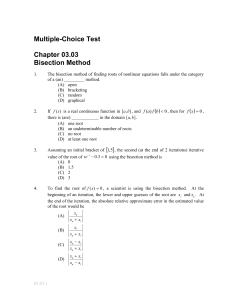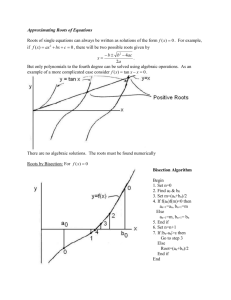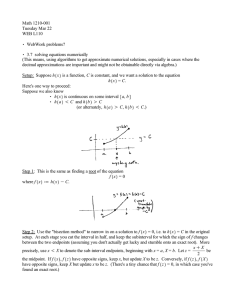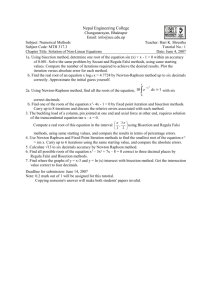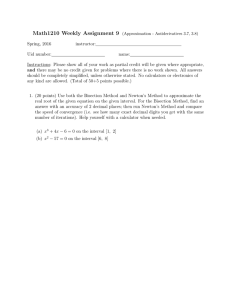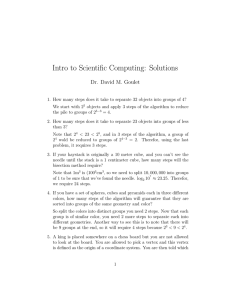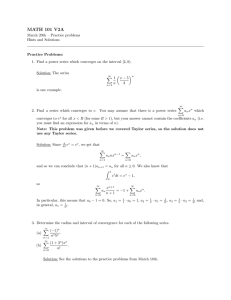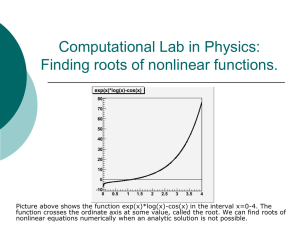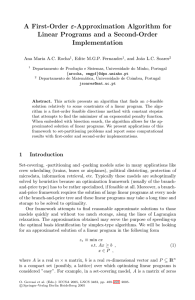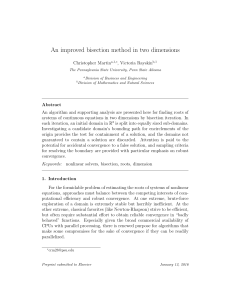Partial Solutions to Homework VI
advertisement
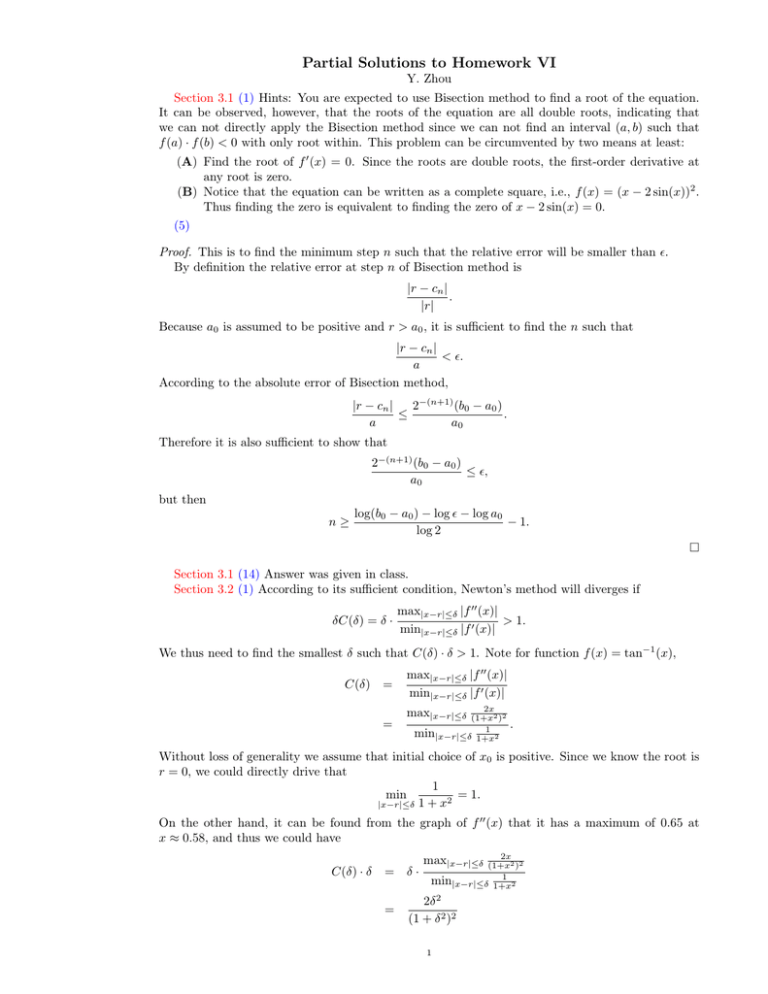
Partial Solutions to Homework VI Y. Zhou Section 3.1 (1) Hints: You are expected to use Bisection method to find a root of the equation. It can be observed, however, that the roots of the equation are all double roots, indicating that we can not directly apply the Bisection method since we can not find an interval (a, b) such that f (a) · f (b) < 0 with only root within. This problem can be circumvented by two means at least: (A) Find the root of f 0 (x) = 0. Since the roots are double roots, the first-order derivative at any root is zero. (B) Notice that the equation can be written as a complete square, i.e., f (x) = (x − 2 sin(x))2 . Thus finding the zero is equivalent to finding the zero of x − 2 sin(x) = 0. (5) Proof. This is to find the minimum step n such that the relative error will be smaller than . By definition the relative error at step n of Bisection method is |r − cn | . |r| Because a0 is assumed to be positive and r > a0 , it is sufficient to find the n such that |r − cn | < . a According to the absolute error of Bisection method, 2−(n+1) (b0 − a0 ) |r − cn | ≤ . a a0 Therefore it is also sufficient to show that 2−(n+1) (b0 − a0 ) ≤ , a0 but then n≥ log(b0 − a0 ) − log − log a0 − 1. log 2 Section 3.1 (14) Answer was given in class. Section 3.2 (1) According to its sufficient condition, Newton’s method will diverges if δC(δ) = δ · max|x−r|≤δ |f 00 (x)| > 1. min|x−r|≤δ |f 0 (x)| We thus need to find the smallest δ such that C(δ) · δ > 1. Note for function f (x) = tan−1 (x), C(δ) = = max|x−r|≤δ |f 00 (x)| min|x−r|≤δ |f 0 (x)| 2x (1+x2 )2 1 min|x−r|≤δ 1+x 2 max|x−r|≤δ . Without loss of generality we assume that initial choice of x0 is positive. Since we know the root is r = 0, we could directly drive that 1 min = 1. |x−r|≤δ 1 + x2 On the other hand, it can be found from the graph of f 00 (x) that it has a maximum of 0.65 at x ≈ 0.58, and thus we could have C(δ) · δ = δ· = 2x (1+x2 )2 1 min|x−r|≤δ 1+x 2 2 max|x−r|≤δ 2δ (1 + δ 2 )2 1 2 if δ ≤ 0.58; or C(δ) · δ = δ· = 2x (1+x2 )2 1 min|x−r|≤δ 1+x 2 max|x−r|≤δ 0.58δ if δ ≥ 0.58. Apparently in the first option C(δ) · δ < 1 always. From the second option we know 1 = 1.724 the Newton’s method will diverge. that if C(δ) · δ > 1 or δ > 0.58 (4). Proof. We have Taylor expansion 1 f (x + f (x)) = f (x) + f 0 (x)f (x) + f 00 (ξ)f 2 (x). 2 Apply this relation to g(xn ) and define en = xn − r we get en+1 f (xn ) 0 f (xn ) + 21 f 00 (ξ)f (xn ) [f 0 (xn ) + 21 f 00 (ξ)f (xn )]en − f (xn ) f 0 (xn ) + 12 f 00 (ξ)f (xn ) = en − = Apply Taylor expansion 1 0 = f (r) = f (xn ) − f 0 (xn )en + f 00 (η)e2n 2 to above iterative relation of en we get en+1 = = 1 00 1 00 2 2 f (η)en + 2 f (ξ)f (xn )en 1 f 0 (xn ) + 2 f 00 (ξ)f (xn ) 1 00 1 00 2 2 f (η)en 2 f (ξ)f (xn )en + . 1 00 0 0 f (xn ) + 2 f (ξ)f (xn ) f (xn ) + 12 f 00 (ξ)f (xn ) The first term converges quadratically, and the second term will also converges quadratically if f (xn ) is proportionally to en with bounded coefficient. This is the case since by Taylor expansion of f (xn ) around x = r we have f (xn ) = f (r) + f 0 (ρ)en = f 0 (ρ)en , and f 0 (ρ) is bounded around for any given initial x0 .
